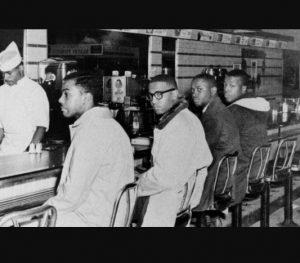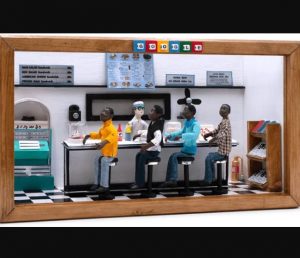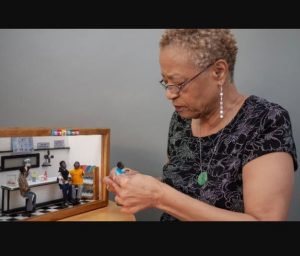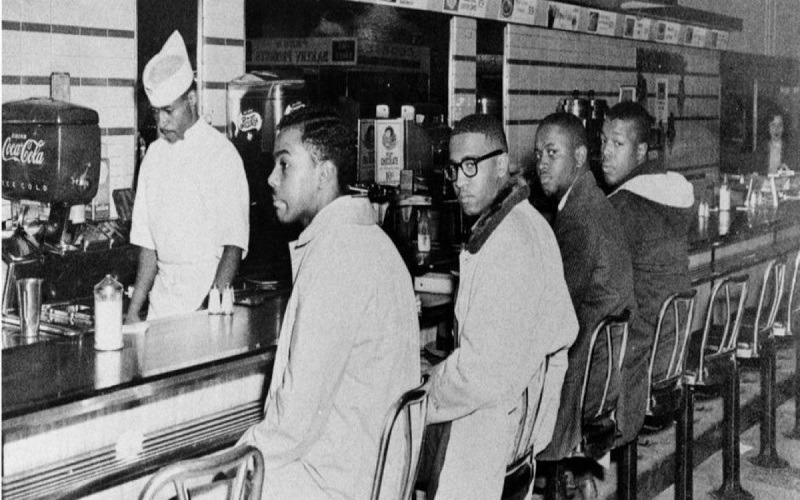In today’s world, if someone dominates a person on any basis, then we have human or civil rights to stand up against it. If you talk about some years before, then only in the United States, the superiority complex of the white peoples were way more at the peak. Until and unless, the Afro-Americans stood by themselves and went on a protest, nothing would have changed.
Around 60 years ago from today, a group of four African American college students decided to sit down at a whites-only Woolworth’s lunch counter in Greensboro, based in North Carolina. Their plan was not to do anything but to wait as they repeated the same process sitting all day on the seats with no service and requests to leave.
So, why did the sit-in happen? When did it start? When did it end? To find out in detail, let’s discuss this.
Start of Greensboro Sit-In Civil Rights Movement
When you take initiations, then only things could change. In the same way, the four Afro-American students, Joseph McNeil, Franklin McCain, Ezell Blair Jr, and David Richmond from North Carolina A&T University defended themselves and their initiation made a history. The Greensboro Sit-In Civil Rights Movement took place in 1960 after the group up four students turned to be a mass of 300 students within three days of the protest.

Image Source: WGHP
The mass was gathered at the “white-only” lunch counter after the four students denied service. Although the white ones tried a thousand times to make them leave, they refused every time. The four students sat until the store closed. The next morning, they used to come again and do the same.
Meanwhile, other parts of the South also demonstrated the same sit-in technique movements in order to end racial segregation. The transformation fought against Jim Crow-era segregation. The protest was successful after several months until Woolworth’s was finally desegregated in July 1960.
Google Doodle Wished the 60th Anniversary To The Movement
Who had thought that the silent movement, Greensboro Sit-In would one day change the history for the black peoples? Well, the initiation of the four students was appreciated by the Google Doodle that commemorated the 60th anniversary of the Greensboro sit-ins. Without the movement, it would have become hard for black peoples to make a space in society far away from racial discrimination.

Image Source: Google Doodle
Recently, Google kicked off Black History Month with a doodle on its page praising the Greensboro Sit-In. The doodle came from the Compton-based artist, Karen Collins. Collins is the founder of the African American Miniature Museum. The doodle is one of the photos of Karen’s dioramas that reflects the “Greensboro Four” protesting racial segregation at the lunch counter of Woolworth on 1st February 1960.
Collins, who has been demonstrating the facts of racial discrimination in the past, wrote on her blog:
Organized by four Black college freshmen, the protest against segregation served as a catalyst for similar demonstrations throughout the nation.
She adds,
Today’s Doodle diorama not only pays homeage to the sit-in, but also to everything that came as a result: changes in our country to make it more possible for ALL Americans- no matter their race, color, or creed-to live to their full potential.
Karen founded the Afro-American Miniature Museum due to the midst of her pain and anguish. Let’s find in detail about her museum.
Karen Collins: The Founder of African American Miniature Museum
Karen Collins creates dioramas where she reflects the moments in black history for 24 years. All of her arts and dioramas are kept safely at the African American Miniature Museum. She is active on this project with her husband, Eddie Lewis. Her way of telling stories through dioramas are way more than excellent. After her son got prisoned, she started the foundation.

Image Source: CNN
If we go to visit the museum, we can see her dioramas work in venues like schools, libraries, and churches which all display the black history in the United States. Although she rarely visits the Museum, her goal is to create a permanent location of her 50 dioramas. Greensboro Sit-In is surely going to be on the list. Collins also shared the importance of her museum on her blog saying:
For me, the museum was a way to turn the negativity into something positive and share the stories of our ancestors’ strength and perseverance through hardship. I want young people to learn about those that came before them who sacrificed to help make the lives they live today possible.
She adds,
Most importantly, I want them to see that we each have the power to make it through difficult times to thrive and hopefully make things better for those who come after us.
A person must understand the value of another person by looking above racial segregation. The story of four Greensboro sit-in influenced the world to think once again about the racial discrimination in their places.
For more interesting articles, visit Wikye.









